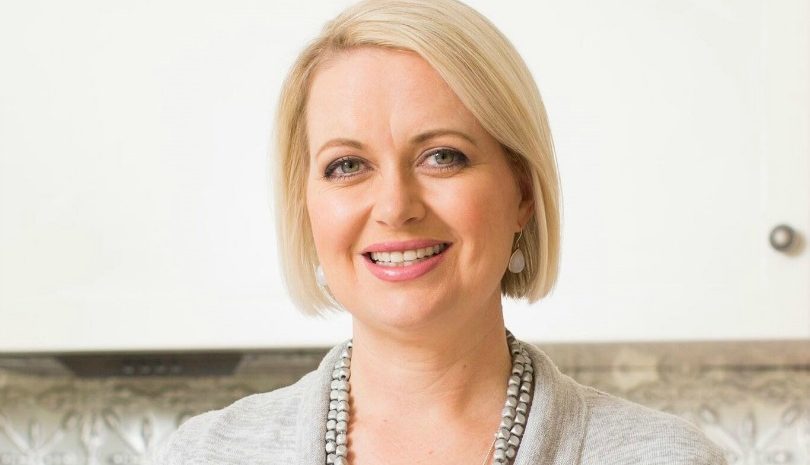Q&A with Kelly Jamieson of Edible Blooms

Welcome to our weekly Q&A with one of Internet Retailing’s 2017 Top 50 People in E-Commerce. See our previous Q&As here.
This week, editor Heather McIlvaine speaks to Kelly Jamieson, founder of Edible Blooms. Jamieson started the online gift bouquet business in 2005, growing it into a national brand.
Short on time? Here are three key takeaways from the interview:
- Speed-to-customer is crucial in the perishable goods business.
- A recent partnership with UBEReats lets customers choose one-hour delivery for $5.
- Social media has had the biggest impact on traditional e-commerce businesses, according to Jamieson.
Heather McIlvaine: How did you get your start in e-commerce?
Kelly Jamieson: Like a lot of young Australians, I did my working holiday in the UK. I worked at Time Out magazine and was part of their dotcom rollout…this was pre-dotcom-bust. It really sparked my interest in e-commerce. After coming back to Australia and working in professional services for a while, I started Edible Blooms in 2005. It was an e-commerce store from day one.
Part of that was because I was on a really shoestring budget and I couldn’t afford the retail space [for the commercial kitchen] in Brisbane CBD. Our product was coming from the fruit markets in the suburbs, so I decided if I couldn’t be near my customers, I would be near my suppliers. Now all of our stores are located in city fringe locations and the website is the key sales channel.
HM: What has your growth trajectory been like?
KJ: Because we work with perishable products, we had to have a national store footprint to serve a national customer base from the beginning. We had really fast growth and by the end of our first 12 months we had stores open all around the country. We became a national brand quite quickly and went to New Zealand as well. We now deliver an Edible Bloom every two minutes each working day. We also expanded our range. Because fresh fruit is quite challenging to get to country Australia, we added chocolate bouquets, which have a better shelf life.
HM: Perishable goods put a lot of pressure on delivery. How do you approach that side of the business?
KJ: The number one thing for us is building really strong relationships with logistics partners. We have multiple delivery partners in every capital city and we want the fastest and most reliable couriers. If one logistics partner lets us down, they let our customers down, so we own that relationship and ask our partners how we can work better with them.
We do free same-day delivery if you order before 11am and free next-business day delivery Australia-wide. The only time people pay is if they want it express. We would rather pay a little more for a delivery service and our customer have a great experience, than use the cheapest provider. Having said that, we always want great value.
HM: How do you think Amazon’s arrival in Australia will change the delivery landscape?
KJ: Australia is a really challenging delivery space because of the geographic spread. It requires a lot of investment in distribution hubs. If someone like Amazon put infrastructure in place that would help us get things out to customers even faster, I think that’s exciting.
Any opportunity for us to reach customers faster is a positive. We just went live with UBEReats nationally and now people can get an Edible Bloom delivered in one hour for $5. People want convenience. More and more they’re demanding things today not tomorrow.
HM: What are you working on now?
KJ: We’re in the process of rebuilding our website and the next stage will be working on the mobile site. It’s not as optimised as it should be, but it will be soon. We’re tracking now to see how people use the mobile site so we can make it better for them. More than half the traffic now comes from mobile, but desktop still has a better conversion rate. The mobile conversion rate is really improving month on month.
HM: You’ve been in e-commerce for over 10 years. What are some of the biggest changes you’ve seen?
KJ: I think the rise of social media has had the biggest impact, particularly in the last 2-3 years because now you’re generating transactions and bottom line value. I used to describe social media as a hygiene factor. It was like cleaning your store – it didn’t generate sales but you had to do it. Now it’s actually really critical to your business, and that’s been a big learning curve.
The other challenge is that the cost of acquiring customer is increasing. In the early days, you could buy clicks on Google for next to nothing. It allowed small businesses to compete with big businesses because everyone was on an even playing field. It’s much harder for smaller players to compete and purchase the same amount of traffic that bigger players can purchase today. There’s a lot more strategy involved.
HM: What one thing do you think has been critical to your success?
KJ: We’ve been managing our NPS score for four years. Every month we collate each location’s score and do a blended national score. When we started we were getting in the high 70s, but last month our blended score was 83 and some of our stores are in the high 80s, which is amazing. We have a policy that if we get a score of 6 or under, we personally contact the customer. You’re not making big improvements when you get that feedback, but all those small little changes add up.
Kelly Jamieson was named to Internet Retailing’s 2017 Top 50 People in E-Commerce, which can be downloaded here.
Comment Manually
You must be logged in to post a comment.

No comments